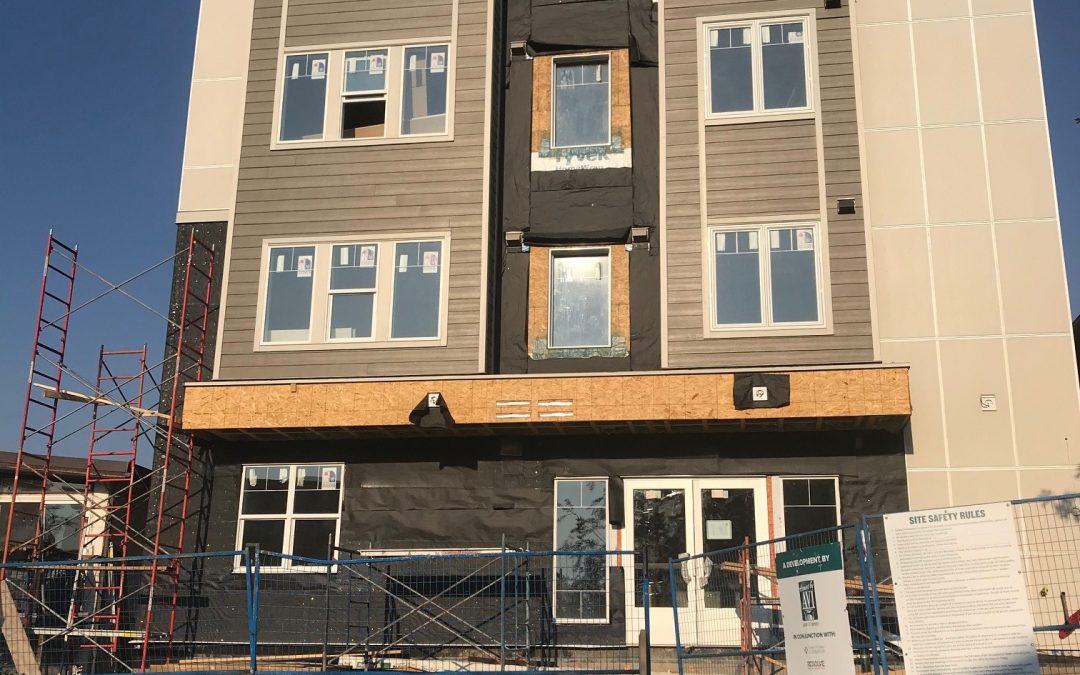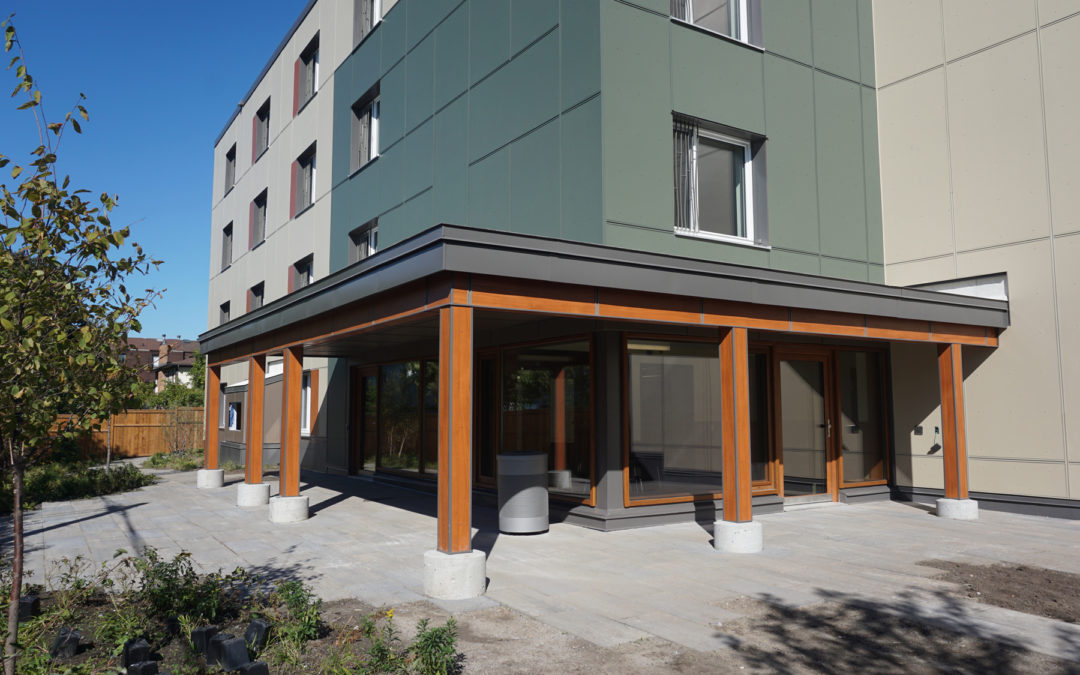
Trudeau government should spend more on affordable housing and homelessness
Trudeau government should spend more on affordable housing and homelessness
On July 21, the Alternative Federal Budget (AFB) Recovery Plan was released. The document aims to provide public policy direction to Canada’s federal government, in light of the current COVID-19 pandemic (more information on the AFB Recovery Plan can be found, while an overview of the AFB’s history can be found here).
I was author of the Recovery Plan’s chapter on affordable housing and homelessness, which can be accessed here.
Here are 10 things to know.
1. The COVID-19 Recession has resulted in income loss and rental arrears, especially for lower-income households who are mostly renters. Eviction bans across Canada have had some effectiveness in preventing or slowing down evictions; but when those bans are lifted, many households will be on the brink of absolute homelessness.
2. The recession has diminished people’s ability to get mortgage approvals. In part, this is due to many people having reduced income (or having lost their jobs entirely); it is also due in part to new mortgage rules taking effect on July 1.[1] This means an entire cohort of would-be homeowners will be stuck in the rental market, driving down rental vacancy rates.
3. The COVID-19 pandemic has also exposed cracks in the patchwork of social services in place for people experiencing homelessness. Challenges have included: the closing of daytime services (e.g., drop-in centres); the closing of public spaces with access to washroom facilities (e.g., libraries); and a lack of Internet access. The pandemic has also created additional costs and operational pressures on supportive housing programs and emergency shelters—for cleaning, personal protective equipment and increased staffing.
4. Across Canada, local officials in the homelessness sector have worked very hard responding to the pandemic. They have created more physical distancing at existing emergency shelters, opened new facilities, leased hotel rooms, and created facilities for both isolation and quarantine. The Trudeau government has provided important financial assistance to the homelessness sector to support these efforts. Indeed, the Government of Canada’s COVID-19 Economic Response Plan, announced on 18 March 2020, includes an additional $157.5 million in one-time funding for Reaching Home (representing a 74% increase in Reaching Home funding for the 2020-21 fiscal year).
5. Nevertheless, challenges remain in the homelessness sector. They include: the existence of shared bathrooms; inadequate access to personal protective equipment; harm reduction (e.g., safe access to illicit drugs); encampments (i.e., outdoor sleeping); a dwindling workforce at emergency shelters and drop-in centres; and an anticipated increase in homelessness resulting from the economic downturn.[2]
6. The Trudeau government should provide a rental top-up to the Canada Emergency Response Benefit (CERB). This could simply be added to existing CERB payments, showing up in recipients’ bank accounts along with CERB. Canada Revenue Agency could administer the program, just as it does CERB.[3] CERB recipients transitioning onto Employment Insurance could carry their rental top-up with them.
7. The recent Reaching Home enhancement ought to be made permanent. The AFB Recovery Plan would make permanent the recent enhancement to federal Reaching Home funding. Across Canada, federal funding for homelessness (i.e., Reaching Home) is rather modest. According to a 2018 federal program evaluation, for each $1 invested federally, $13 is invested by other sources (mostly provincial and municipal dollars).[4]
8. Federal spending on the National Housing Co-investment Fund should be boosted. A central feature of the National Housing Strategy unveiled in November 2017 is a new National Housing Co-investment Fund (NHCF). Primarily a loan program (as opposed to a grant program) the NHCF has been criticized for providing insufficient funding to make rent levels truly affordable for low-income tenants. The AFB Recovery Plan would enhance the NHCF with an additional $3 billion in grant money annually, over and above what has already been committed by the Trudeau government.
9. The Canada Housing Benefit ought to be enhanced. Central to the Trudeau government’s National Housing Strategy is the launch, in 2020, of a Canada Housing Benefit (CHB). This benefit provides financial assistance to help low-income households afford the rent. The AFB Recovery Plan would double the federal contribution to this benefit at a cost of $250 million annually, over and above current allocations. Province and territories would be expected to cost-share.
10. There should be federal spending earmarked to fund capital for supportive housing. Supportive housing refers to specialized housing for vulnerable populations that features professional (i.e., social work) staff support. The National Housing Strategy contains no specific provisions for supportive housing, even though one of the Strategy’s stated goals is to reduce chronic homelessness by 50%.[5] The AFB Recovery Plan would allocate $2 billion in new annual funding (for capital) for supportive housing.
In sum. The AFB Recovery Plan urges the federal government to create housing options to the point where, when we are hit by a future wave or new pandemic, all Canadians have a home in which to stay safe. Further, the downturn in the real estate market offers an opportunity for the Trudeau government to assist non-profit housing providers to acquire new stock in cost-effective ways.
The following individuals provided invaluable assistance with the affordable housing and homelessness chapter of the AFB Recovery Plan: Meaghan Bell, Michele Biss, Stéphan Corriveau, Katie-Sue Derejko, John Dickie, George Fallis, Sherwin Flight, Alex Hemingway, Graeme Hussey, Bruce Irvine, Brandi Kapell, Ron Kneebone, Brian Kreps, David Macdonald, Christina Maes Nino, Bernadette Majdell, Elsbeth Mehrer, Michael Mendelson, Jeff Morrison, Amanda Noble, Abe Oudshoorn, Steve Pomeroy, Tim Richter, Michal Rozworski, Natalie Spagnuolo, Marion Steele, Greg Suttor, Jennifer Tipple, Letisha Toop, Ricardo Tranjan, Stuart Trew, Samuel Watts and one anonymous source. I wish to also thank Susan Falvo, Hayley Gislason, Angela Regnier, Vincent St-Martin and Sarah Woodgate for assistance with this blog post. Any errors are mine.
Photo used with permission from Home Space Society.
[1] Canada Mortgage and Housing Corporation. (2020, June 4). CMHC reviews underwriting criteria. Retrieved from CMHC website: https://www.cmhc-schl.gc.ca
[2] Bainbridge, J., & Carrizales, T. J. (2017). Global homelessness in a post-recession world. Journal of Public Management & Social Policy, 24(1), 6. Retrieved from: https://digitalscholarship.tsu.edu/jpmsp/vol24/iss1/6/
[3] This proposal has been put forth by Marion Steele and also by a third-sector group of experts. For more information, see this recent Toronto Star opinion piece: https://www.thestar.com/business/opinion/2020/05/24/a-lot-of-toronto-renters-cant-get-by-even-with-cerb-they-need-a-top-up-from-the-feds.html.
[4] Employment and Social Development Canada. (2018). Evaluation of the Homelessness Partnering Strategy: Final Report. Retrieved from the Government of Canada website: https://www.canada.ca
[5] Having said that, supportive housing has received Co-investment Fund financing.




